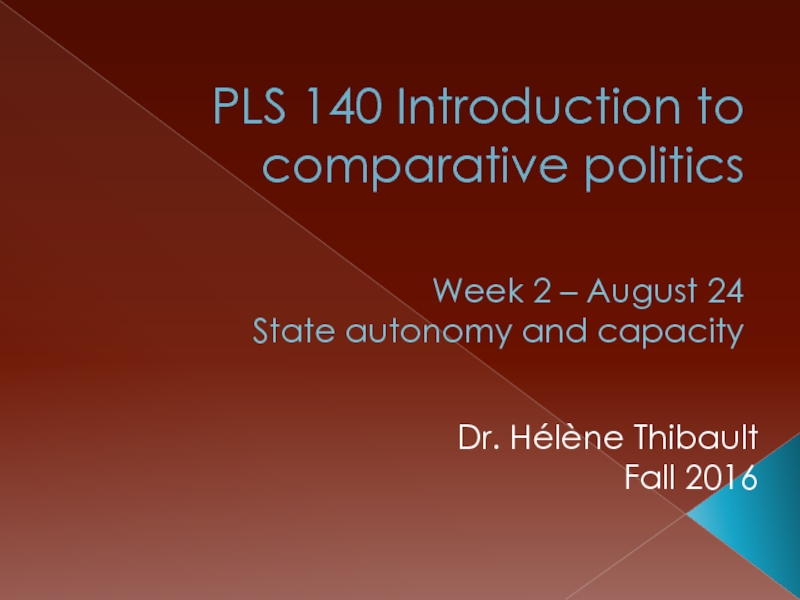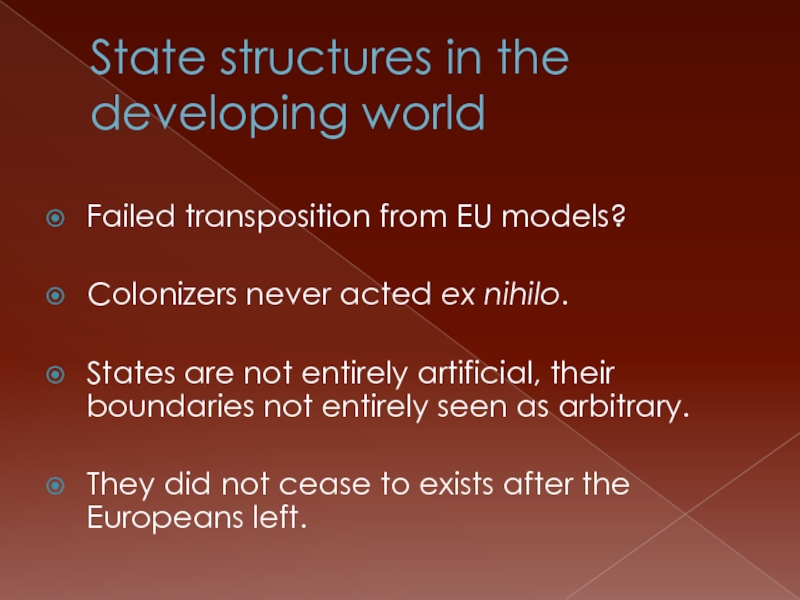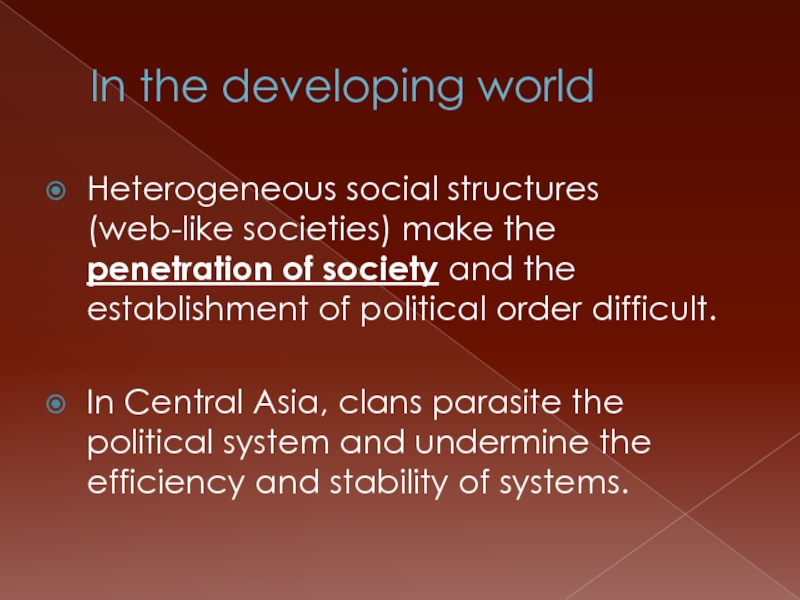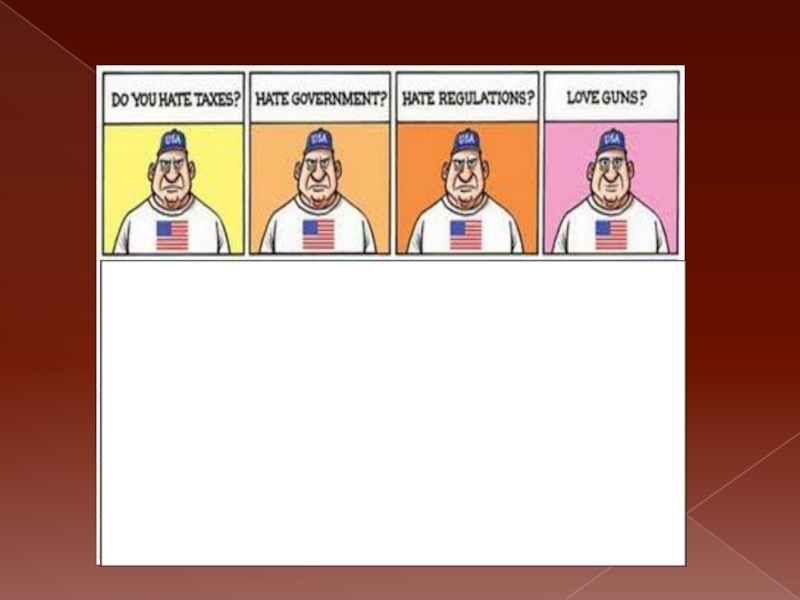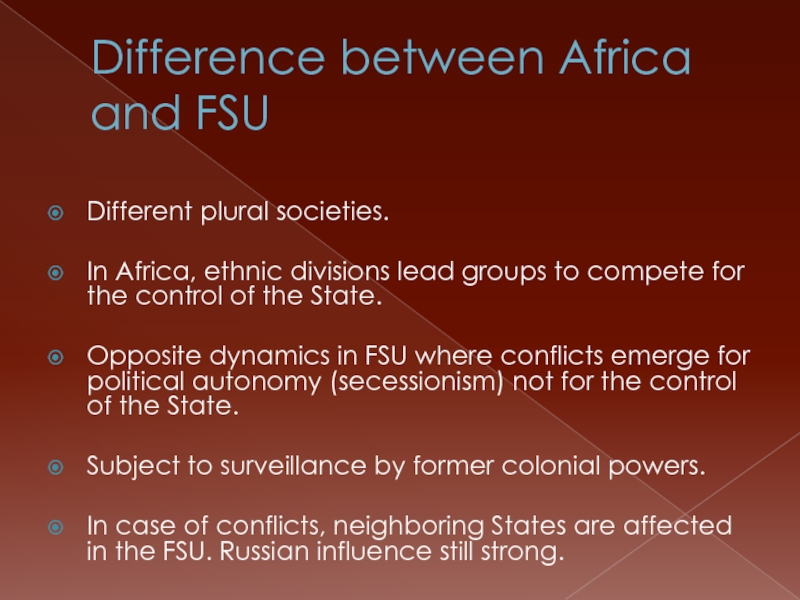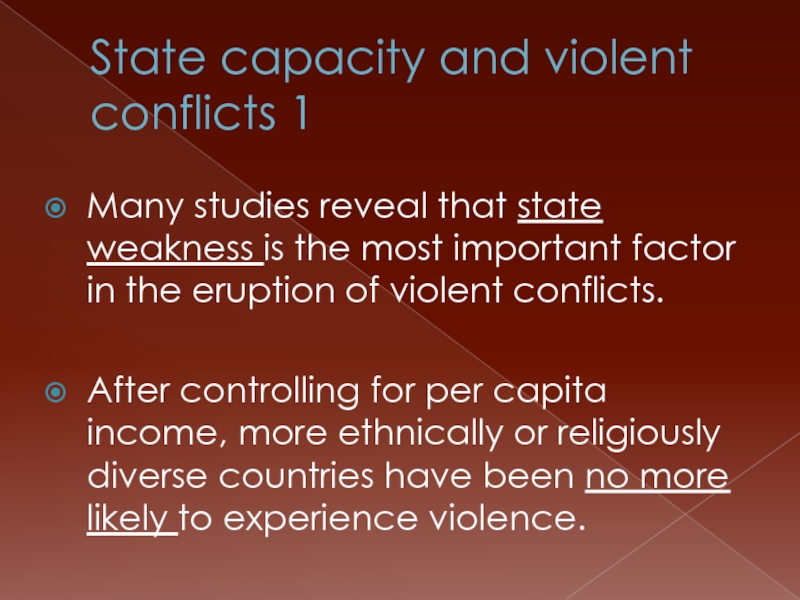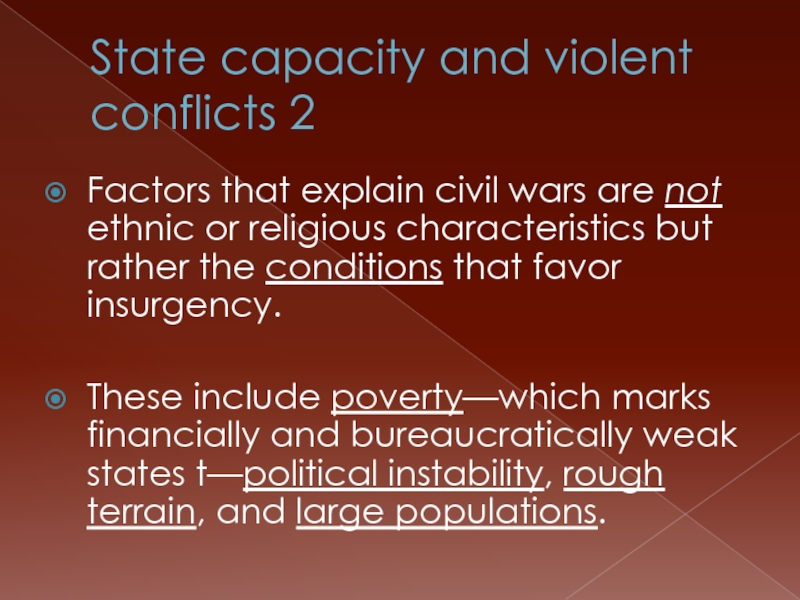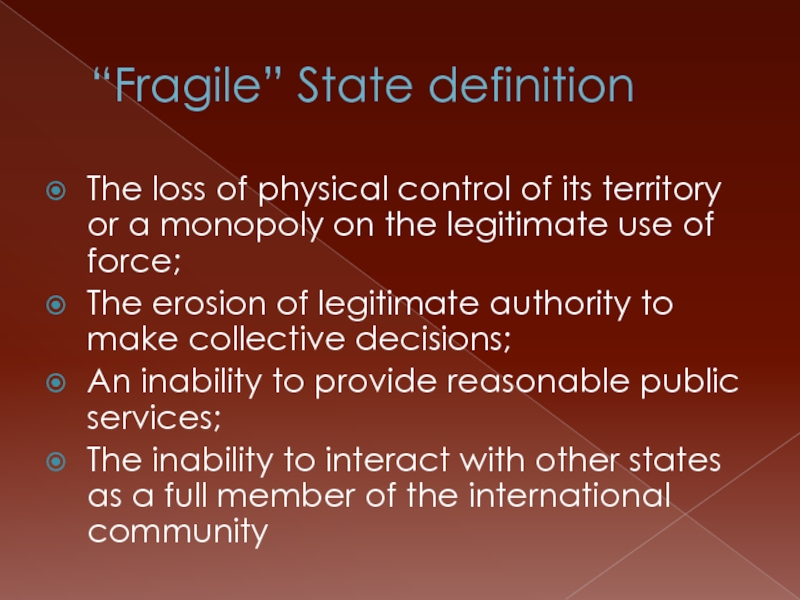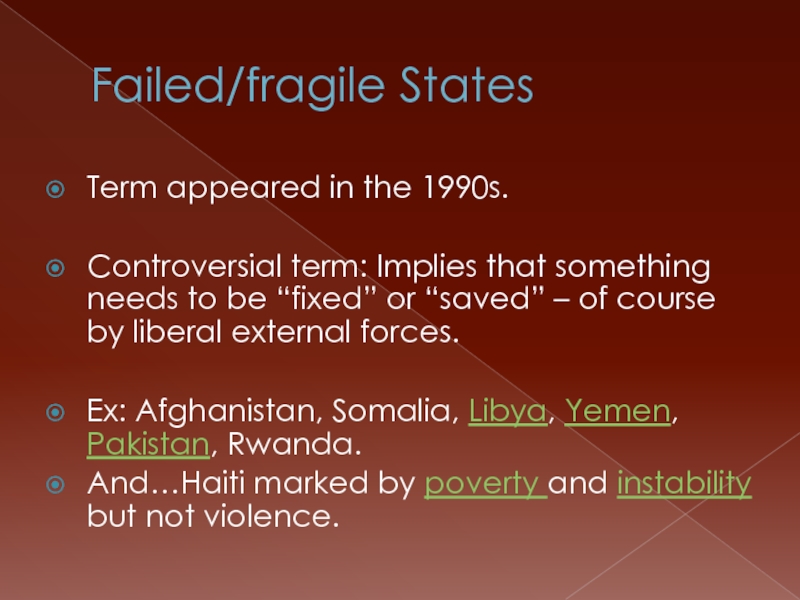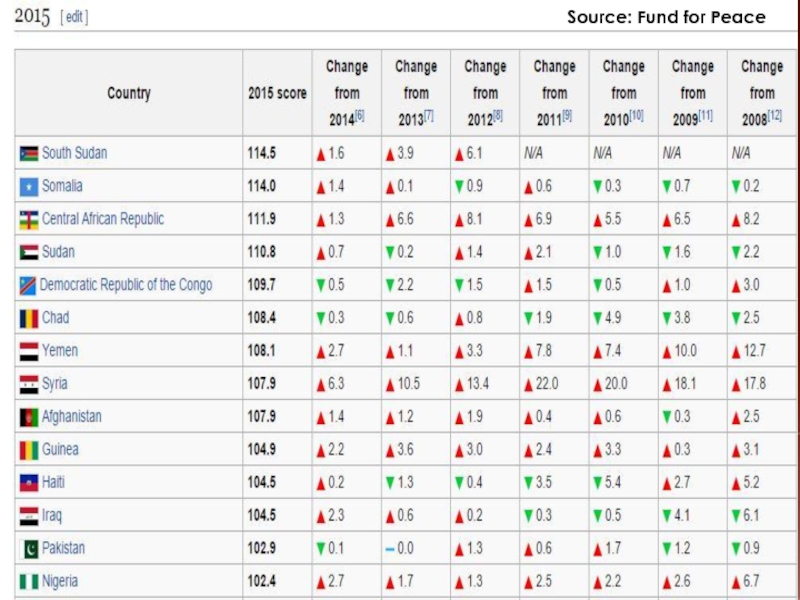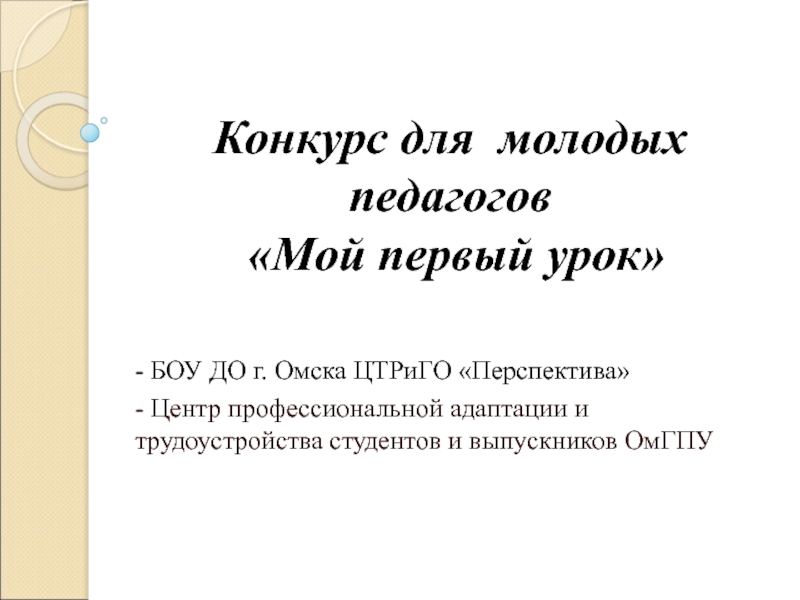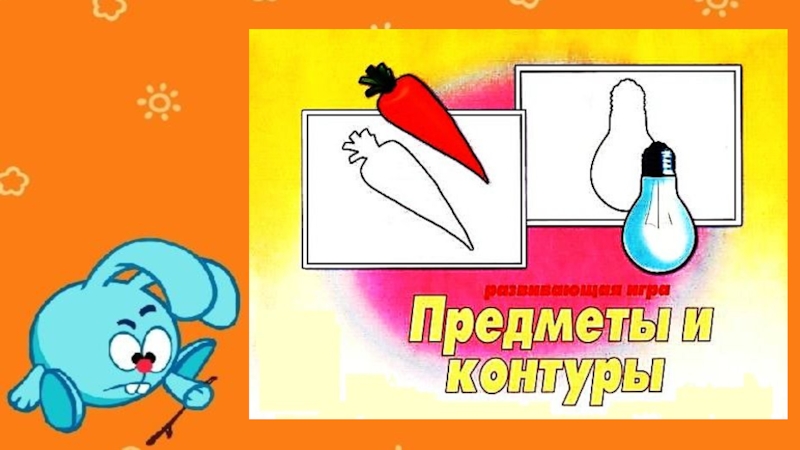Dr. Hélène Thibault
Fall 2016
- Главная
- Разное
- Дизайн
- Бизнес и предпринимательство
- Аналитика
- Образование
- Развлечения
- Красота и здоровье
- Финансы
- Государство
- Путешествия
- Спорт
- Недвижимость
- Армия
- Графика
- Культурология
- Еда и кулинария
- Лингвистика
- Английский язык
- Астрономия
- Алгебра
- Биология
- География
- Детские презентации
- Информатика
- История
- Литература
- Маркетинг
- Математика
- Медицина
- Менеджмент
- Музыка
- МХК
- Немецкий язык
- ОБЖ
- Обществознание
- Окружающий мир
- Педагогика
- Русский язык
- Технология
- Физика
- Философия
- Химия
- Шаблоны, картинки для презентаций
- Экология
- Экономика
- Юриспруденция
PLS 140 Introduction to comparative politics. State structures in the developing world презентация
Содержание
- 1. PLS 140 Introduction to comparative politics. State structures in the developing world
- 2. State structures in the developing world Failed
- 3. In the developing world Heterogeneous social structures
- 4. State autonomy vs capacity Capacity: ability of
- 6. Difference between Africa and FSU Different plural
- 7. State capacity and violent conflicts 1 Many
- 8. State capacity and violent conflicts 2 Factors
- 9. “Fragile” State definition The loss of physical
- 10. Failed/fragile States Term appeared in the 1990s.
- 11. Source: Fund for Peace
Слайд 1PLS 140 Introduction to comparative politics
Week 2 – August 24
State autonomy
and capacity
Слайд 2State structures in the developing world
Failed transposition from EU models?
Colonizers never
acted ex nihilo.
States are not entirely artificial, their boundaries not entirely seen as arbitrary.
They did not cease to exists after the Europeans left.
States are not entirely artificial, their boundaries not entirely seen as arbitrary.
They did not cease to exists after the Europeans left.
Слайд 3In the developing world
Heterogeneous social structures (web-like societies) make the penetration
of society and the establishment of political order difficult.
In Central Asia, clans parasite the political system and undermine the efficiency and stability of systems.
In Central Asia, clans parasite the political system and undermine the efficiency and stability of systems.
Слайд 4State autonomy vs capacity
Capacity: ability of the State to carry out
basic functions of providing security and reconciling freedom and equality.
Autonomy: exercise power independently of the public or international actors.
Ex: corruption in Ukraine, clan politics.
Low levels in one of them is not necessarily problematic, ex: Canada, Switzerland.
Autonomy: exercise power independently of the public or international actors.
Ex: corruption in Ukraine, clan politics.
Low levels in one of them is not necessarily problematic, ex: Canada, Switzerland.
Слайд 6Difference between Africa and FSU
Different plural societies.
In Africa, ethnic divisions lead
groups to compete for the control of the State.
Opposite dynamics in FSU where conflicts emerge for political autonomy (secessionism) not for the control of the State.
Subject to surveillance by former colonial powers.
In case of conflicts, neighboring States are affected in the FSU. Russian influence still strong.
Opposite dynamics in FSU where conflicts emerge for political autonomy (secessionism) not for the control of the State.
Subject to surveillance by former colonial powers.
In case of conflicts, neighboring States are affected in the FSU. Russian influence still strong.
Слайд 7State capacity and violent conflicts 1
Many studies reveal that state weakness
is the most important factor in the eruption of violent conflicts.
After controlling for per capita income, more ethnically or religiously diverse countries have been no more likely to experience violence.
After controlling for per capita income, more ethnically or religiously diverse countries have been no more likely to experience violence.
Слайд 8State capacity and violent conflicts 2
Factors that explain civil wars are
not ethnic or religious characteristics but rather the conditions that favor insurgency.
These include poverty—which marks financially and bureaucratically weak states t—political instability, rough terrain, and large populations.
These include poverty—which marks financially and bureaucratically weak states t—political instability, rough terrain, and large populations.
Слайд 9“Fragile” State definition
The loss of physical control of its territory or
a monopoly on the legitimate use of force;
The erosion of legitimate authority to make collective decisions;
An inability to provide reasonable public services;
The inability to interact with other states as a full member of the international community
The erosion of legitimate authority to make collective decisions;
An inability to provide reasonable public services;
The inability to interact with other states as a full member of the international community
Слайд 10Failed/fragile States
Term appeared in the 1990s.
Controversial term: Implies that something
needs to be “fixed” or “saved” – of course by liberal external forces.
Ex: Afghanistan, Somalia, Libya, Yemen, Pakistan, Rwanda.
And…Haiti marked by poverty and instability but not violence.
Ex: Afghanistan, Somalia, Libya, Yemen, Pakistan, Rwanda.
And…Haiti marked by poverty and instability but not violence.
